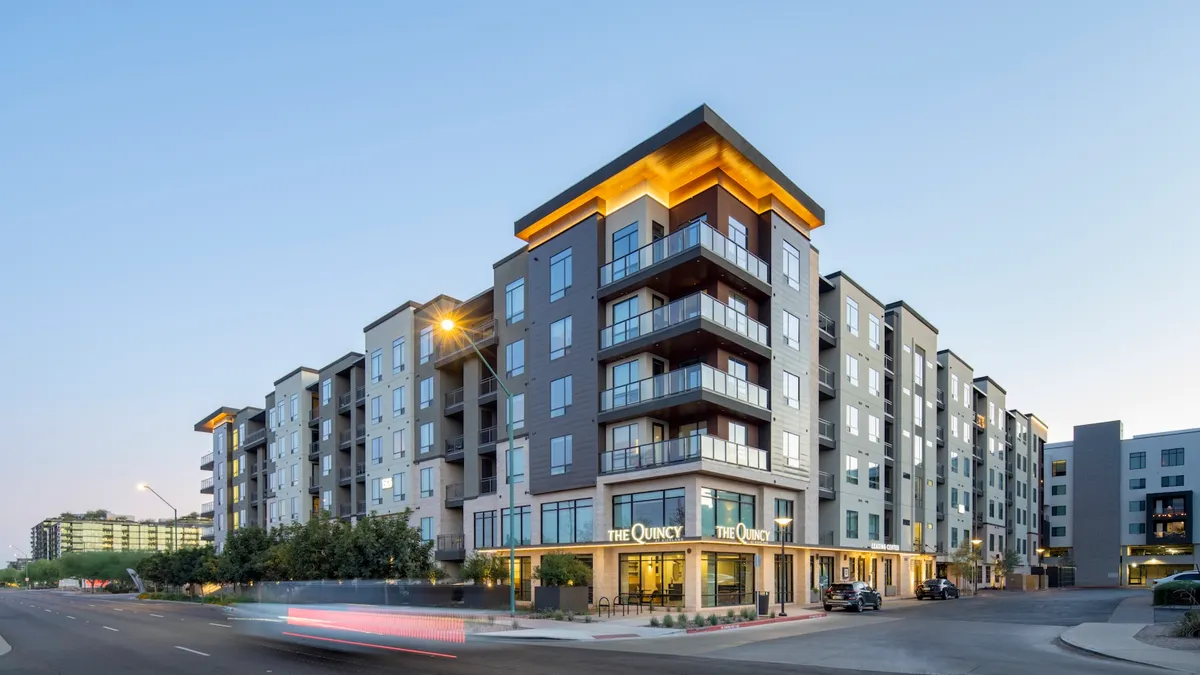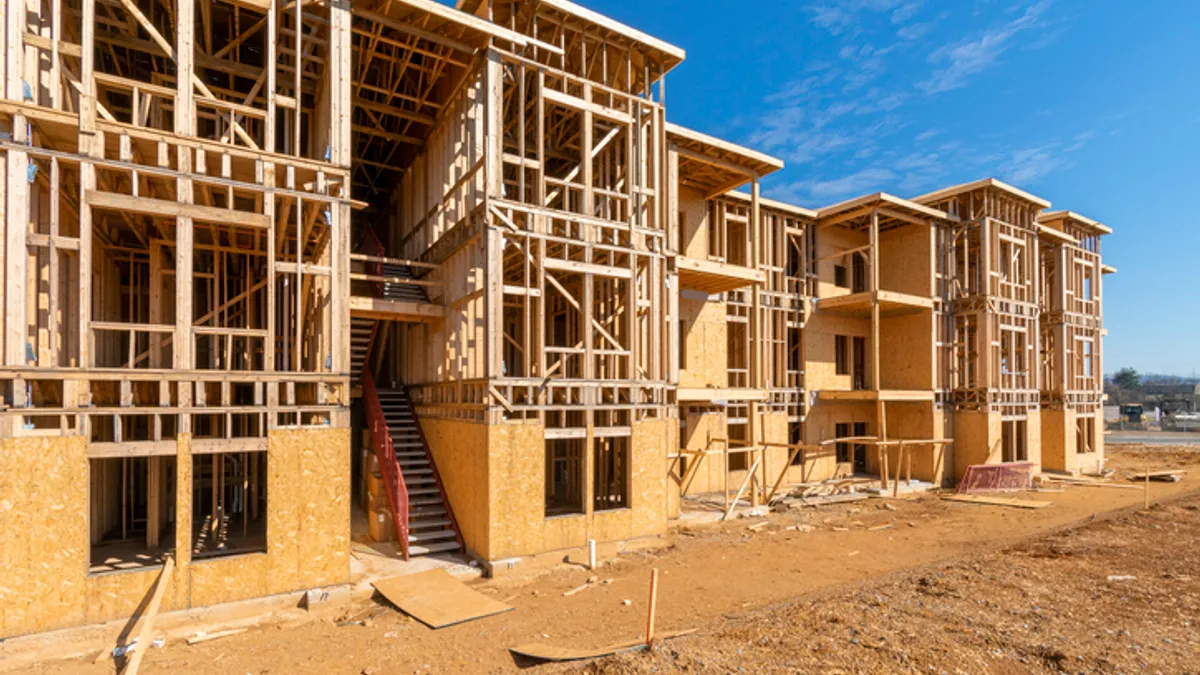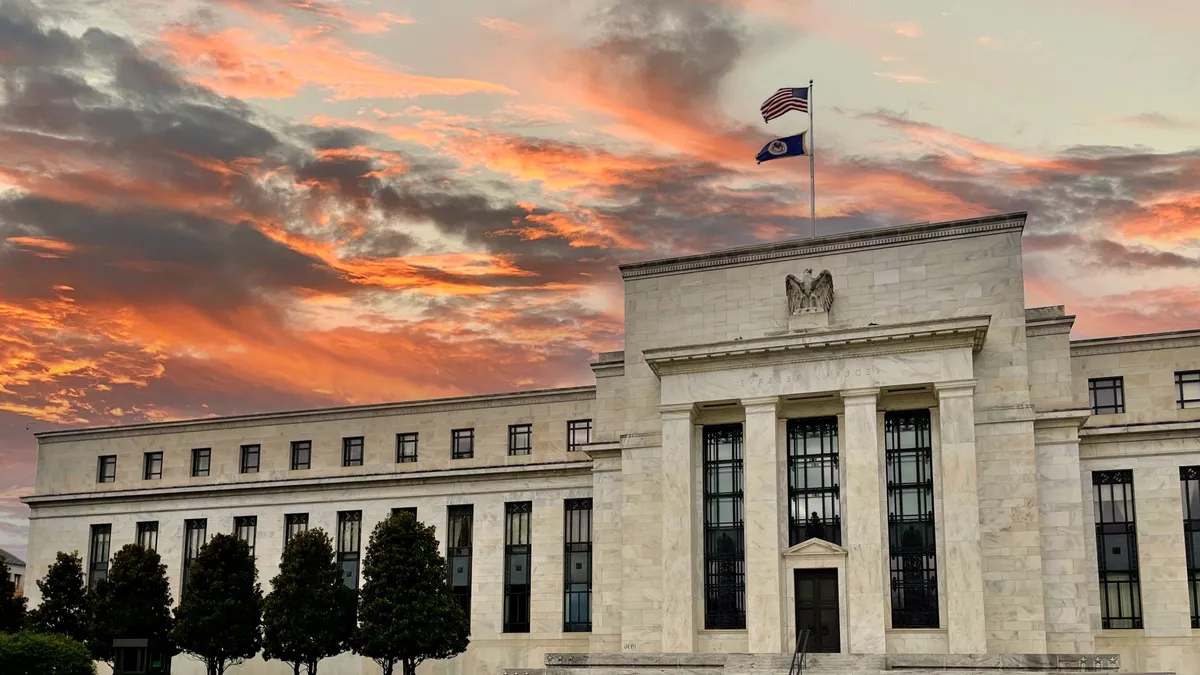Last month, Atlanta-based Cortland, the eighth-largest apartment owner in the country with 80,000-plus homes, stepped into the fixed-income world when it announced a programmatic joint venture with private investment firm Declaration Partners Real Estate to invest preferred equity capital in multifamily real estate assets.
The venture with DPRE, which is backed by David M. Rubenstein, co-founder and co-chairman of Washington, D.C.-based financial services firm The Carlyle Group, has initial capital of $100 million and will seek to provide fixed-income principal investments of between $5 million and $35 million that are subordinate to debt from senior lenders. Over the past five years, the two firms invested in several multifamily assets.
“It's a very natural extension for us,” Cortland President of Investment Management Jason Kern told Multifamily Dive. “It plays on all of our strengths and our capabilities.”
With investment professionals on the ground in the Sun Belt and Mountain West markets, Cortland already has the ability to underwrite multifamily deals. While these professionals usually structure deals from the equity perspective, Kern said the switch to the debt side shouldn’t be difficult.
“Obviously, as an equity owner, we are almost always putting in place some form of debt, sometimes some preferred equity or mezzanine,” Kern said. “We have the methodology and the experience of how to create those capital structures. So, it’s natural to figure out a way to play in another part of the capital structure.”
In August, Cortland also announced the close of its Cortland Enhanced Value Fund VI and its affiliated entities, securing $1.5 billion in commitments for its value-add multifamily private equity investment strategy, which exceeded its $1 billion target.
Here, Kern talks with Multifamily Dive about the preferred equity strategy, the recent interest rate cuts and the recovering apartment sales market.
This interview has been edited for brevity and clarity.
MULTIFAMILY DIVE: How will the fixed income offering change the organization?
JASON KERN: It's not going to really require us to develop new skills or hire new people, per se. So, we think of this as a starting point. Hopefully, it’s something that we can build and grow into something much bigger in the future in terms of Cortland-sponsored and branded fixed-income strategies to go alongside our main strategy of owning and operating as an equity sponsor of assets.
It’s just a good diversification of our capital and our activities. It's probably overdue for us to be involved on this side of the ledger.
Where do you think you’ll be most likely to deploy preferred equity?
One way will be in development. When multifamily developers are seeking construction debt — very often, we do when we are developing — they go out and put in a layer of preferred equity in the capital structure. Returns are robust enough that you can afford to pay the extra rate on that pref equity and minimize your equity check.
The other use of this is gap capital. That is going to be more prevalent, at least for the next 12 months. There's not a lot of development starts happening right now, and I think more of this capital will go toward that gap capital where you've got an owner of what might be a transitional asset or what might be a stabilized asset, but they've got a debt maturity coming up.
What kinds of situations are these owners in?
Their debt yield has changed since they put floating rate debt in place. They need to refinance. As an owner, they may not have the ability to or just don’t want to inject additional equity in order to refinance that first mortgage at a lower principal amount.

So, pref equity can step in to fill that gap, and they don’t have to write a new check. They get new lower loan proceeds, and we can fill in that gap. At this point in the cycle, I think that will be the preponderance of situations. I think there will be a lot of opportunities on that front. As the market recovers, we'll probably have more development starts.
Is the apartment sales market returning to normal?
The multifamily market was super busy in 2021. Then, in 2022, when Jerome Powell started raising rates, we got very quiet. A big bid-ask spread ground the whole machine to a halt for 18 months after that.
Then, we started finding some interesting one-off needles in the haystack in the fourth quarter of last year. If you remember, the 10-year was over 5%, and we started to get a lot more not necessarily distressed but motivated sellers that needed to exit an asset for whatever reason — their fund was coming to maturity or they had debt maturing that they didn't want to refinance or roll over a rate cap. So, we found a few one-off deals that made sense for us from a risk-return perspective.
This year, it has started to get, not back to full normalcy, but that bid-ask spread really has narrowed, and I hope that the 50 basis point cut will cause that to narrow even more and to create even more transaction volume.
What was your reaction to the Federal Reserve’s decision to cut interest rate 50 basis points?
I'll tell you my personal views. I was a little surprised. I thought 50 basis points was needed, but I was skeptical that would be the decision for political and other reasons.
It's a good first step, and I think it will give people a little more confidence that we are now headed in the right direction. Obviously, the 10-year Treasury has been coming down in anticipation of this, but this supports the going-in cap rates we're seeing in the market.
And the more the 10-year continues to go down, you should have a delayed response from cap rates coming down as well, which will improve our values. Obviously, for any floating rate borrower, all this helps our cash flow position on our investments.
Click here to sign up to receive multifamily and apartment news like this article in your inbox every weekday.




















